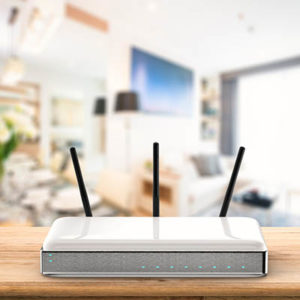
One of the biggest benefits to professional work in recent years has to be the Wi-Fi signal. This simple concept – what if we could connect to a network without a wire – has changed how and where work can be done… assuming, of course, that the connection works. For today’s tip, we’ll go over how to optimize your Wi-Fi signals.
It is no secret that a Wi-Fi signal (or lack thereof) can stir up some passionate emotions. It has become such an expected thing in the developed world, even the slightest interruption or lost signal can send people spinning into a furious rage. More importantly, many offices and professional workplaces rely on Wi-Fi in order for their workforces to remain productive. Your office/workplace is very likely one of them.
There are measurable benefits to be had from a workplace environment that features an accessible and fast connection. 42 percent of employees find that the ability to quickly access information has a positive effect on their productivity.
If just for that reason alone, it is all the more important that you have a fast and reliable Wi-Fi connection. There are quite a few ways to check to see how yours currently measures up, and what else you can do to improve it.
- Test Your Speed – This activity will help you establish what you have to work with from your Internet service provider, or ISP. There are assorted speed tests available online to help determine this, as well as a native one offered by Google.
- Find Peaks and Valleys – Once you know your Wi-Fi speed, you should use that Wi-Fi to download a signal heatmapping application onto your smartphone. This will allow you to find where the signal is weaker and stronger around your office.
- Reconfigure Your Router – Sometimes your router might just need some TLC. Accessing the router’s dashboard through your computer’s browser will let you reconfigure it. Be sure to consult your IT provider before messing with any settings to prevent connection or security issues.
- Replacing Your Router – There’s always the chance that your router is just too old to fully keep up with the Internet speeds that are now possible with the latest Wi-Fi standards. Using a router that matches the standard used at the time offers benefits to both connection speed and range.
- Check for Firmware Updates – Your router may have an outdated firmware installed that is preventing it from reaching its potential. Updating that via the manufacturer’s website can easily add some benefits. Again, it is better that you consult with your IT resource before getting too involved.
- Move The Router – Remember that heatmapping application you used earlier? You can help improve the signal strength of your router by adjusting its positioning based on what effect it has on the heatmap.
When it comes to networking, we have a few tricks up our sleeves. Reach out to us for more assistance with any of your other IT questions at 760-934-4382.
